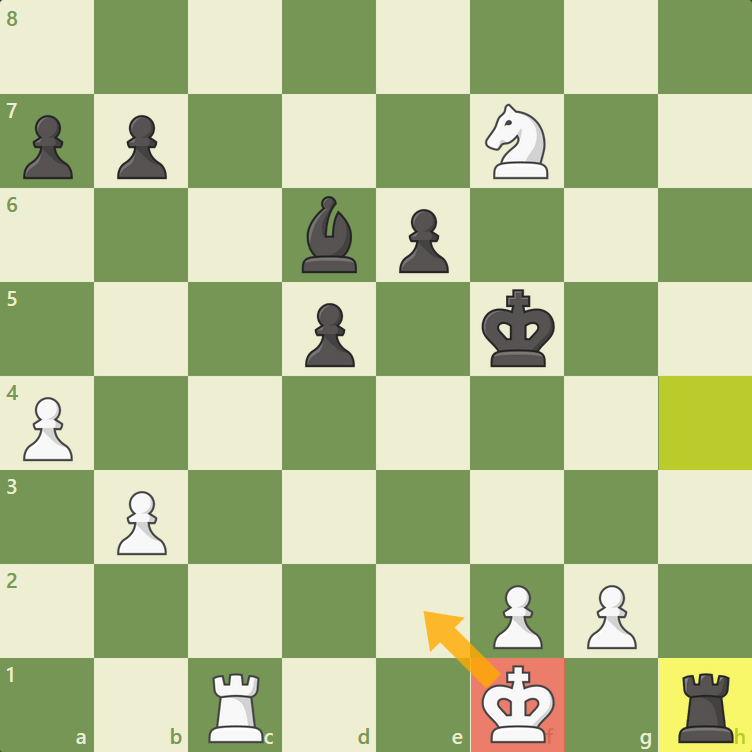
Forced Move
During a chess game, a person must continuously pick just one out of the many available moves. Sometimes, though, players do not have the luxury of choosing what they want to do because they have to play a forced move.
Here is what you need to know about forced moves:
What Is A Forced Move In Chess?
A forced move is one that a player must make to respond to a threat posed by an opponent. If a player's king is in check, for instance, that player must make a move that gets their king out of check. Other examples of forced moves involve defending an attack against a piece or protecting against a serious threat, such as the possibility of a checkmate.

Conversely, a move that forces the other player to respond in a certain way is known as a forcing move. In the position above, the move Rh1 is a forcing move since it forces White to move their king out of check.
Why Are Forced Moves Important?
Forced moves are an essential part of chess since they allow for tactics, combinations, and even checkmates to happen.
In the case of checks and checkmates, for instance, forced moves arise from the limitations imposed by the rules of chess. Ignoring them would mean breaking the game's rules altogether. On the other hand, failing to respond to less severe threats would not violate the game's laws per se but would cause a player to end in a bad position.
Take a look at the example below. As you can see, Black is checking the white king with their h5-pawn. The white king cannot remain in check, so White must play a forced move to escape the black pawn's attack.

Notice how the white king has just one square left to go to: the h4-square. White not only is forced to move their king, but that piece is also forced to move to h4, allowing checkmate on the next turn after the queen moves to f4.

You can see another kind of forced move by analyzing the position below. White just moved a knight to d5, threatening the queen on f6 and a fork on c7. Black could ignore those threats and play any move, but that would allow White to trade a knight for a queen and enter a winning position.

In this case, Black must move their queen and protect the c7-pawn. Black's only sensible choices are moving their queen back to d8 or putting it on the d6-square. We can say, then, that those are forced moves for Black.

As you can see from the examples above, understanding forced moves and their implications is imperative for any chess player. You can use this concept to either defend yourself better or create devastating attacks against your opponent.
Test Your Skills
Now that you understand what a forced move is, it is time for you to test your skills. Solve the puzzles below by taking advantage of the concept of forced moves.
Puzzle 1: Black's rook is under attack. Can they do anything to save their rook?

You are right! There is no way for Black to save their rook because their king is in check and they are forced to get out of it.

Puzzle 2: Can you force the white king to the edge of the board so you can deliver a checkmate and win the game?
Conclusion
You now know what forced moves are and how you can use them during your games to defend yourself or attack your opponent. Head over to our Puzzles page and use the concept of forced moves to practice your tactical skills.







